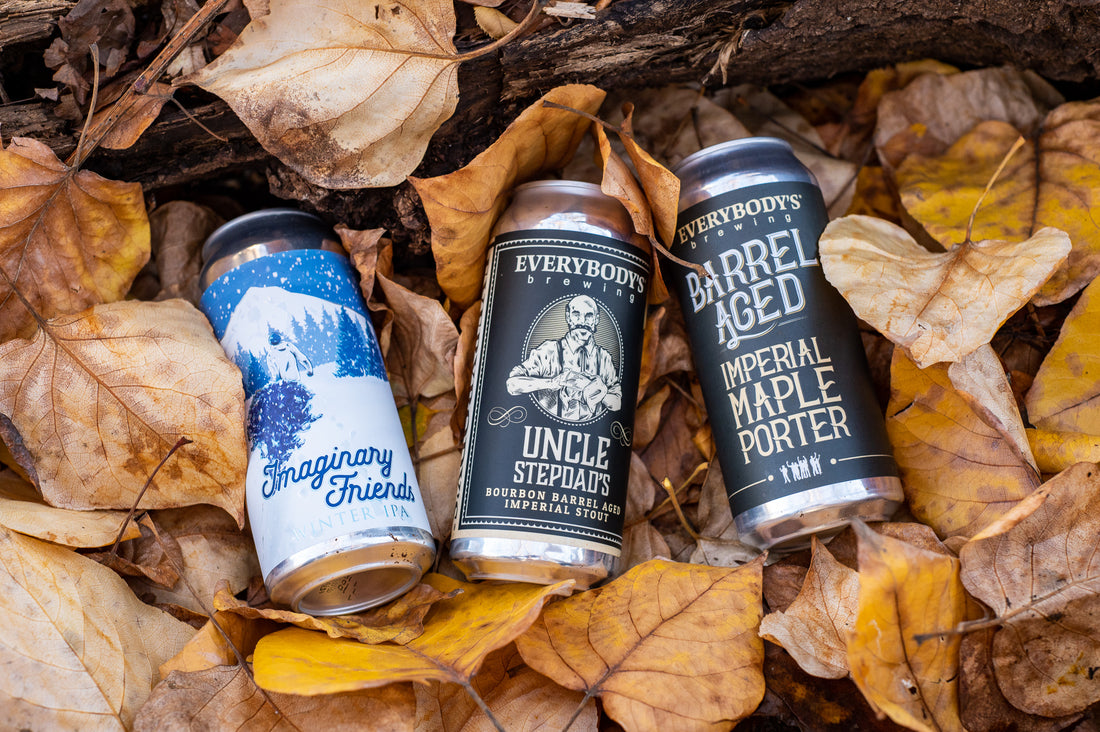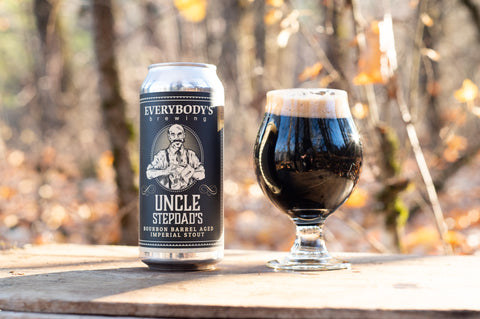
What Exactly Is A Winter Beer?
Share
The weather diviners at the National Oceanic and Atmospheric Administration (NOAA) are predicting a colder and wetter than average winter for the Pacific Northwest. That’s looking likely here in the Columbia River Gorge, where it’s been cold, windy, and extremely wet for weeks. Whether you prefer to gear up, get outside, and spit in winter’s eye, or hunker down indoors with the puffiest of blankets, winter seasonal beers are the perfect accompaniment!

Seasonal beers can be driven by many factors – the serving temperature (who doesn’t love a chilled pilsner on a hot summer day), ingredient availability (we eagerly await fresh hop season in the early fall), or holiday pairings, for example (it’s hard to resist some chocolate and coffee after a holiday meal). When it comes to winter beers, it’s often about staving off the cold, hence the “winter warmer” appellation that is frequently applied, especially to winter brews with a higher-than-average alcohol content, and/or beers using ingredients with warming characteristics, such as deeply roasted malts and barley, spruce tips, or spices. Stouts and porters, with their natural hints of chocolate and coffee, are also well-suited for the colder months. Many winter seasonal beers are labeled “winter ales”, but that is technically not a beer style, just a tag that can cover most any beer that was created specifically to complement the winter season in some manner.

It is likely that folks have been making winter warmers for as long as brewing has occurred in colder climates. An anonymous record from 1656 declares “When the chill Sirocco blows/And winter tells a heavy tale/O, give me stout brown ale.” Early beers relied on few or no hops, enabling the brews to be served at hot temperatures (a true winter warmer). Hopped beer reacts poorly when heated, and the gradual increase in hop usage over time may have caused the shift from beers served hot or warm, to beers employing higher alcohol content, spices, etc. to create a feeling of warmth.

Like many beer styes, winter beers largely disappeared for decades, but were revived during the craft beer resurgence in the 1970s. A typical modern winter beer emphasizes dark malts, has 5% to 8% ABV alcohol by volume (ABV), and may employ spices. That said, many brewers focus on making high-alcohol beers, such as barley wines or “imperial” versions of a stout or IPA. Aging high-alcohol beers in used liquor barrels (bourbon, most commonly) throughout the year to be ready for tapping in winter is also popular, imparting oaky flavors that would overpower weaker beers.

Some of Everybody’s Brewing’s most popular beers are tailored for the winter season, and Head Brewer Dave McGinley enjoys crafting these seasonal recipes. “I really look forward to using chocolate and black malts, along with roasted barley. In the cold weather, people crave something filling and boozier.” Dave’s winter favorites in the Everybody’s lineup are Monster Cookie (making a return this season), and imperial chocolate stouts.
Despite common themes for winter beers, anything can be a winter beer if a customer’s palate desires it! For example, Everybody’s Brewing’s hazy IPAs have become so popular that Dave always keeps at least one hazy on tap, and we release our Foggy Goggles Hazy IPA to coincide with ski season.

Some of our winter beers are already available, such as the ever-popular Imaginary Friends Winter IPA, and we’ll be releasing the following brews over the next few weeks:
- Uncle Stepdad’s Bourbon Barrel-Aged Stout
- Bourbon Barrel-Aged Imperial Maple Porter
- Monster Cookie Imperial Milk Stout
- Foggy Goggles Hazy IPA
As the holidays grow closer, keep watch for an assortment of deals and new gear at our pub and online!